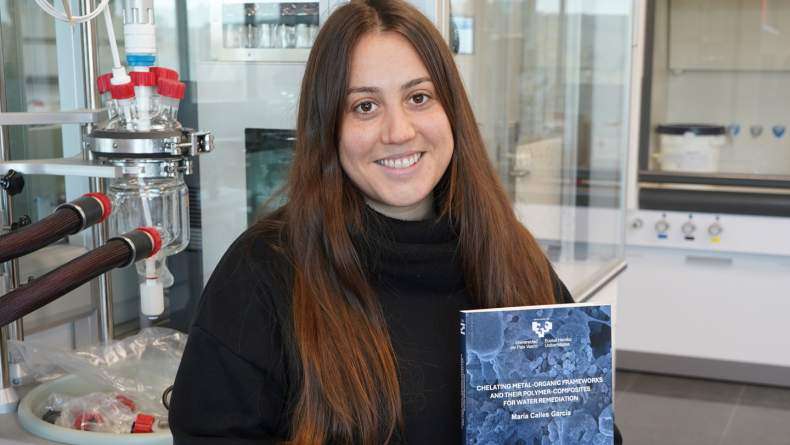BCMaterials Fortnightly Seminar #95

ANDER REIZABAL
(BCMATERIALS)
New Challenges for Silk Fibroin
Silk Fibroin, the principal component of Silk cocoons has been widely used like textile material through thousands of years. In the last time, its advanced mechanical, optical and thermal properties had lent the Fibroin like one of the most interesting natural polymers for the becoming green future. Thanks to his processing facility, Silk Fibroin has been processed in a long variety of morphologies, i.e., films, microspheres, fibres, oriented fibres, scaffolds and hydrogels. Nevertheless, the low knowledge about its molecular structure hinder the ability to control it properties. In this talk we will try to give the actual knowledge of silk fibroin in order to search new ideas and tips to improve this knowledge lack.JOSÉ MARÍA PORRO
(BCMATERIALS)
Thermally and field-driven mobility of emergent magnetic charges in square artificial spin-ice
Artificial spin ices are arrays of nanomagnetic islands that are single domain and are arranged in such a way that they are geometrically frustrated [1]. Here we focus on the square geometry where each vertex has four nanomagnets whose moments can point either into or out of the vertex. Their lowest energy arrangement consists of two-in and two-out, obeys the so-called ‘ice-rule’, and can be induced via appropriate thermal protocols [2]. It is possible to construct an ordered state by tiling such vertices, above which it is possible to have ice-rule-violating excitations known as emergent magnetic monopoles. These emergent excitations can be manipulated with magnetic field, as has previously been shown [3]. We have employed an advanced magnetic microscopy technique, X-ray transmission microscopy (XTM) at the 6.1.2 beamline of the Advanced Light Synchrotron of the Lawrence Berkeley National Lab, combined with an on-membrane heater and thermometer in order to further explore their behaviour with varied temperature [4]. We observe a regime in which the average monopole drift velocity is linear in field above a critical field for the onset of motion. By analogy with electrical charge drift motion, we define and measure a monopole mobility that is larger both for higher temperatures and stronger interactions between nanomagnets. We describe the behaviour of the critical field with temperature by introducing an interaction term into the Bean-Livingstone model of field-assisted barrier hopping [5]. The mobility in this linear regime is described by a creep model of zero-dimensional charges moving within a network of quasi-one-dimensional objects [6].
[1] R.F. Wang et al., Nature 439, 303 (2006) [2] J.M. Porro et al., New J. Phys. 15, 055012 (2013) [3] E. Mengotti et al., Nat. Phys. 7, 68 (2011) [4] S.A. Morley et al., Proc. SPIE 9551, 9551-Q12 (2015) [5] C.P. Bean & J.D. Livingstone, J. Appl. Phys. 30, S120 (1959) [6] S.A. Morley, J.M. Porro et al., Submitted to Nat. Comms.Related news
María Calles, nueva doctora de BCMaterials
Queremos felicitar a María Calles García por haber obtenido su doctorado en Ciencia y Tecnología de Materiales por la UPV/EHU. El 4 de diciembre María realizó una brillante defensa de su tesis...Charla invitada con investigadores del Instituto de Microelectrónica de Barcelona (3 de diciembre)
El próximo 3 de diciembre, a partir de las 12:00 en el auditorio Martina Casiano de Leioa, BCMaterials recibirá a los investigadores titulares del Instituto de Microelectrónica de Barcelona (IMB-CNM...Charla invitada con Liu Yao sobre baterías de metal-litio (2 de diciembre)
El próximo lunes 2 de diciembre, Liu Yao, profesor del Shanghai Institute of Applied Physics presentará una charla invitada en BCMaterials titulada ‘Li Metal Batteries: From Liquid to Solid-State’....Éxito del workshop anual de BCMaterials, dedicado a materiales críticos
La exitosa edición 2025 del workshop anual de BCMaterials reunió el pasado 19 de noviembre en Leioa a un centenar de asistentes para examinar el estado del arte y debatir sobre los materiales...



